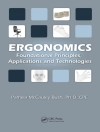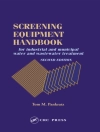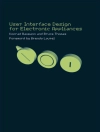In 1944 Lady Park Wood (45 hectares of woodland in Gloucestershire and Monmouthshire, UK) was set aside indefinitely by the Forestry Commission so that ecologists could study how woodland develops naturally. Since then, in a unique long-term study, individual trees and shrubs have been recorded at intervals, accumulating a detailed record of more than 20, 000 individual beech, sessile oak, ash, wych elm, small-leaved lime, large-leaved lime, birch, hazel, yew and other species.
In the seven decades since the study started, the wood has changed; trees grew, died and regenerated, and drought, disease and other events shaped its destiny. Each tree and shrub species reacted in its own way to changes in the wood as a whole and to changes in the fortunes of its neighbours. Meanwhile, the wild fauna, flora and fungi also responded, leaving the wood richer in some groups but poorer in others.
In this landmark book, beautifully illustrated throughout, George Peterken and Edward Mountford, summarise the ongoing results of the Lady Park Wood study, highlighting its unique place in nature conservation and its significance to ecology in general. It also builds on experience at Lady Park Wood and elsewhere to discuss in particular: the role and maintenance of long-term ecological studies; the concept and form of natural woodland; the role of minimum-intervention policies in woodland nature conservation; near-to-nature forestry; and the desirability and practicalities of re-wilding woodlands.
Yazar hakkında
After completing an Honours Degree in Field Biology and Habitat Management, he was employed as a Nature Conservation Advisor covering the county of Shropshire. He then completed a Ph D thesis through The Open University, studying natural woodland development across a series of woodland reserves, from the New Forest to the Scottish Highlands.
Post-doctoral research followed via two EU-funded projects, which included a four-year period focusing on the management of beech forests at a European-level. Topics addressed in detail included natural regeneration, natural stand development, dead wood, and woodland management and history.
Later he was employed as a UK-level Advisor by the Joint Nature Conservation Committee, providing detailed advice to Government on habitat assessment, classification and designation, as well as other areas from the impact of air pollution to green infrastructure.
He now works independently, based in Lancashire, and retains his general interest in the history and conservation of the countryside at large.












